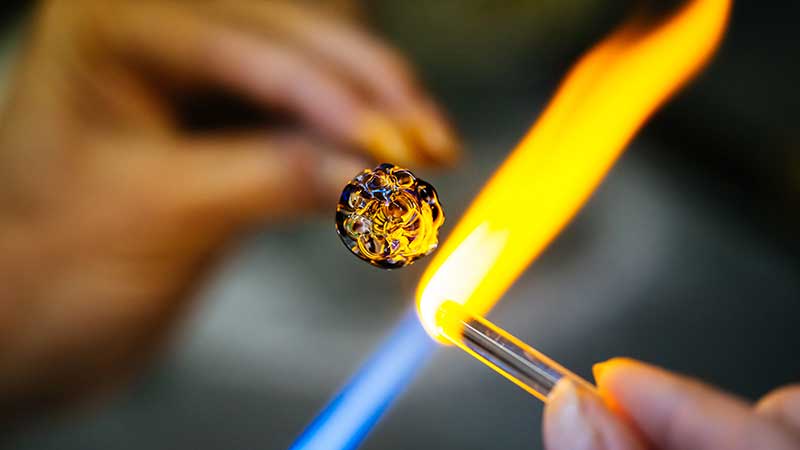
Set in the lush green hills of western North Carolina is Penland School of Craft. In the summer of 1998, I found myself there, taking a course in flameworking as part of my art education degree program at the University of Florida.
While my instructor made custom beakers for scientists, his passion was art. Pots made of thin, delicate glass, to be exact. And I was grateful to learn from him, a practitioner more than professor.
Flameworking is a technique for creating art and other objects from glass using a gas torch, glass rods and metal tools. Operating a torch was a valuable skill I acquired in the course, but it was just one skill – much like multiplying fractions in math, calculating the weight of an atom in chemistry, or manipulating fonts using Adobe Illustrator in a typology course.
The truth is there are many skills in demand today – but we do a poor job of recognizing the ones picked up on the job, in the military, and other places. And we sometimes fail to understand that degrees and other longer-term credentials are more than the sum of discrete skills. Acquiring a skill in isolation teaches us how to do, whereas learning one in conjunction with others teaches us how to think and express ourselves in creative ways.
Back in my flameworking class, I recall sitting across from three genial peers adorned in the outfit of the artsy outcast: Birkenstocks, cargo shorts, longer hair, and an earth-tone tee, untucked. While they paid for the course, just as I had, their intent was different. They sought to make glass bongs or glass beads to sell. I sought to be a better artist. So, how are these different?
When we “do,” our focus is a transactional engagement. One sets out to make a bong, and after following the proper steps, creates a glass bong. Industrial, valuable, and concrete. This transactional approach to learning is what most of my peers chose, as I observed across the bench.
On the other hand, a few of us sat with our sketchbooks, outlining the vision we hoped to accomplish. This “expression” was informed by leveraging our knowledge of form, visual dynamics, color theory, composition, texture, art history, and sculpture learned in other courses. The project for us became a vehicle to mesh discrete skills with acquired knowledge. In some cases, the result was utter failure; in others, it was a glass-tree-trunk in the shape of a person’s body fused to a rock base with outstretched arms coated with hand-made paper from down the hall. (You guessed it, that was my creation).
“Doers” helped build America’s infrastructure while artisans adorned it by expressing the times; be it Art Deco buildings, Ionic columns, or aerodynamic vessels. Today, at a time of heightened debates over short-term skills training and programs of study leading to certificates and degrees, we need to recognize that there is immense value in those who “do” along with those who “express.”
We must keep this in mind as we work to transform higher education, create new paths to learning, and recognize a wide range of skills and abilities learned both in and out of classrooms. As for me, I’ve found it useful to merge my practical and creative sides here at Lumina Foundation as we help Americans get the education and training they need to thrive and lead us to a better future.
It’s up to us to provide the opportunities, flexibility, and resources for people to learn and create, and contribute their talents in the ways that fit best – whether you’re sitting in the fabled halls of a university or a flameworking studio in the lush, green hills of North Carolina.
Christopher Mullin is strategy director of data and measurement for Lumina Foundation
